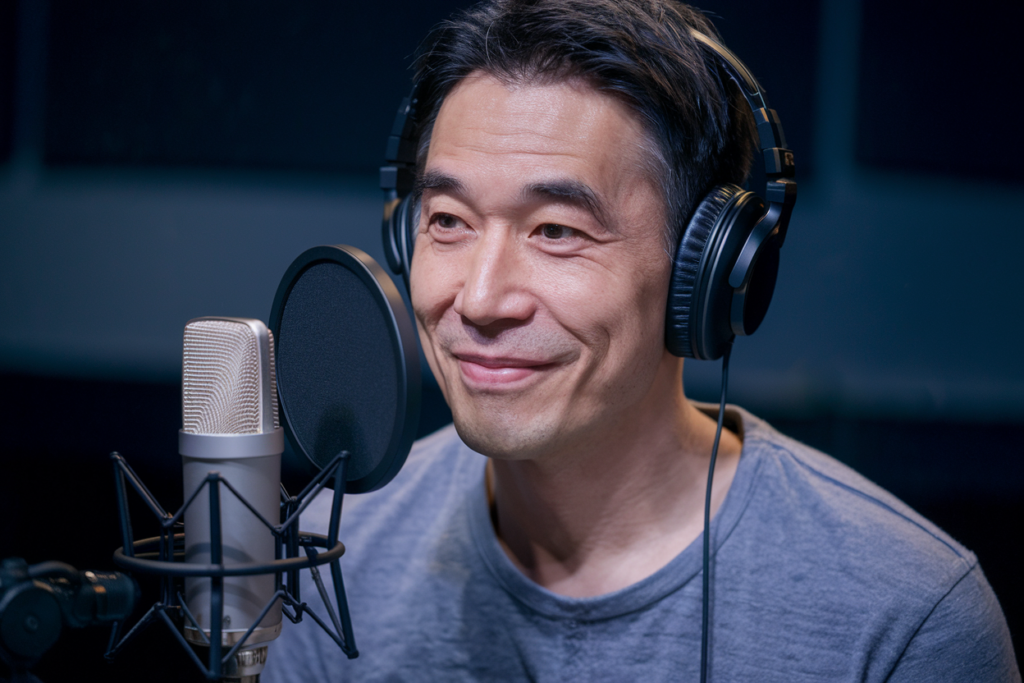Key Takeaways
- Understanding Language Variants: Japanese comprises two main variants—standard Japanese (Hyojungo) for formal communication and regional dialects (ben) that reflect local culture and customs.
- Importance of Standard Japanese: Mastering standard Japanese is essential for effective communication in business, education, and media across Japan due to its uniformity and clarity.
- Exploring Regional Dialects: Learning regional dialects like Kansai-ben or Hokkaido dialect can enhance cultural immersion and foster deeper connections with locals.
- Factors Influencing Your Choice: Consider your personal goals, such as professional needs versus cultural interests, when deciding between standard or regional Japanese.
- Learning Strategies: Tailor your learning approach based on the variant you choose; immerse yourself in media for standard Japanese or engage with locals for regional dialects to improve language skills effectively.
- Cultural Significance of Dialects: Regional dialects enrich understanding of Japan’s diverse culture and identity, making them valuable for social interactions within specific communities.
Ever wondered whether to dive into regional or standard Japanese? The choice can feel overwhelming, especially with Japan’s rich tapestry of dialects and cultural nuances. Each path offers unique benefits that cater to different goals and experiences.
Understanding Japanese Language Variants
Japanese features two primary variants: standard Japanese and regional dialects. Standard Japanese, known as “Hyojungo,” serves as the official language used in education, media, and business. It promotes consistency across the nation and facilitates communication among speakers from different regions.
Regional dialects, or “ben,” showcase Japan’s cultural diversity. Each region boasts unique expressions, pronunciations, and vocabulary reflecting local customs and history. For instance, the Kansai dialect is known for its distinct intonation patterns and colloquial phrases that differ significantly from standard Japanese.
When choosing between these options, consider your goals. If you aim to communicate broadly with a diverse audience or engage in formal settings like business meetings or academic environments, mastering standard Japanese is essential. However, if your interests lie in deeper cultural immersion or specific geographic areas of Japan—like Osaka or Hiroshima—learning a regional dialect can enhance your experience.
Understanding both variants can enrich your language skills and cultural insights. Familiarity with regional nuances often leads to more meaningful interactions with locals, creating connections that transcend language barriers.
Ultimately, whether you opt for standard Japanese or delve into regional dialects depends on your personal objectives and interests in exploring Japan’s rich linguistic landscape. Each choice offers unique benefits that cater to different experiences within this vibrant culture.
Importance of Standard Japanese
Standard Japanese, or “Hyojungo,” plays a crucial role in communication across various contexts. It provides a common ground for speakers from different regions, ensuring clarity and understanding.
Definition and Features
Standard Japanese is the official form of the language used in formal settings. It’s characterized by its clear pronunciation, uniform grammar, and standardized vocabulary. This consistency enables learners to communicate effectively with people throughout Japan. Unlike regional dialects, which may include unique expressions or pronunciations, standard Japanese maintains a level of uniformity that aids comprehension among diverse audiences.
Usage in Media and Education
Standard Japanese dominates media outlets such as television programs, news broadcasts, and films. Its prevalence ensures that audiences can easily relate to content regardless of their local dialects. In education, standard Japanese forms the foundation for textbooks and instructional materials across schools and universities. Learning this variant equips you with the skills needed for professional environments—whether you’re pursuing opportunities in business or seeking roles as a voiceover artist who requires adaptability across various projects.
Embracing standard Japanese opens doors to broader communication networks while providing access to cultural resources critical for navigating Japan’s rich linguistic landscape.
Exploring Regional Japanese Dialects
Japan’s regional dialects, known as “ben,” offer a fascinating glimpse into the country’s cultural diversity. These dialects not only differ in pronunciation but also feature unique expressions that reflect local customs and traditions.
Overview of Key Dialects
Several prominent dialects stand out across Japan.
- Kansai-ben: Predominantly spoken in cities like Osaka and Kyoto, Kansai-ben is known for its distinctive intonation and vocabulary. It often sounds more melodic compared to standard Japanese.
- Hokkaido Dialect: In Hokkaido, you’ll find influences from both mainland dialects and indigenous Ainu language elements, creating a unique blend.
- Kyushu Dialect: This southern dialect varies significantly within Kyushu itself, showcasing differences among areas like Fukuoka and Nagasaki.
Familiarity with these key dialects enriches your understanding of Japan’s linguistic landscape while opening doors to deeper cultural connections.
Cultural Significance
Regional dialects hold immense cultural significance in Japan. They serve as markers of identity, connecting individuals to their heritage and community. Speaking a local dialect can foster camaraderie among native speakers while illustrating respect for their culture.
Moreover, these dialects influence various art forms, including theater performances and traditional storytelling. They add layers of meaning that resonate deeply with audiences familiar with those regional nuances.
Understanding regional Japanese enhances your overall communication skills, whether you’re engaging casually or professionally within specific communities. Embracing this linguistic diversity enables you to navigate social interactions more effectively while appreciating the rich tapestry of Japan’s cultural heritage.
Factors to Consider When Choosing
When deciding between regional Japanese and standard Japanese, several important factors come into play. Each choice has its own advantages depending on your goals.
Personal Goals and Context
First, think about what you want to achieve with your language skills. If you’re aiming for broader communication in formal environments like business or education, standard Japanese is the way to go. It offers clarity and uniformity that’s essential in these contexts. However, if you’re looking for cultural immersion or planning to live in a specific region, mastering a regional dialect enhances your experience. For example, learning Kansai-ben could give you unique insights into the local culture and customs.
Learning Resources and Accessibility
Next, consider the availability of resources. Standard Japanese boasts numerous textbooks, online courses, and media exposure that make learning straightforward. You’ll find ample materials tailored for beginners through advanced learners due to its wide usage in schools and media outlets. On the other hand, regional dialects might have fewer resources available but can offer rich opportunities through local interactions or specialized programs. Engaging with native speakers often provides invaluable practice that textbooks can’t replicate.
Weigh your personal objectives against resource availability when choosing between regional Japanese and standard Japanese. Your decision shapes not just how you’ll learn but also how effectively you’ll connect within Japan’s vibrant cultural landscape.
Learning Strategies for Each Variant
Choosing between regional Japanese and standard Japanese opens various learning strategies tailored to your goals. Understanding each variant’s nuances will enhance your language acquisition journey.
Tips for Mastering Standard Japanese
- Immerse Yourself in Media: Engage with TV shows, movies, or podcasts that use standard Japanese. Exposure to native pronunciation and intonation solidifies comprehension.
- Practice Speaking Regularly: Join conversation groups or language exchange programs. Real-time practice helps you apply what you’ve learned in a supportive environment.
- Utilize Online Resources: Leverage platforms offering courses and materials focused on standard Japanese structures and vocabulary. Textbooks, apps, and websites provide structured learning paths.
- Focus on Grammar Consistency: Study the grammatical rules thoroughly since uniformity is key in standard Japanese communication. This foundational understanding supports clearer expression.
- Seek Professional Guidance: Consider hiring a tutor specializing in standard Japanese to guide your learning process, ensuring you’re on the right track.
Tips for Learning Regional Dialects
- Engage with Locals: Interacting with native speakers who use the dialect daily offers invaluable insights into its unique phrases and expressions.
- Explore Cultural Contexts: Familiarize yourself with local customs and traditions tied to the dialect you’re learning; this enriches your understanding of its usage.
- Listen Actively to Authentic Content: Tune into regional radio stations or watch local films featuring the dialect; this sharpens listening skills while exposing you to natural speech patterns.
- Practice Pronunciation Intonations: Focus on mastering specific sounds unique to the dialect; mimicking local accents increases authenticity in your speaking abilities.
- Join Specialized Workshops or Classes: Look for classes dedicated to specific regional dialects that offer targeted instruction from experienced speakers.
By employing these strategies tailored to either variant, you’ll not only improve your language skills but also deepen your connection with Japan’s rich cultural landscape through effective communication methods suited for both formal settings and social interactions within communities using their respective dialects.
Conclusion
Choosing between regional and standard Japanese ultimately hinges on your personal goals and interests. If you’re aiming for effective communication in formal settings or broader interactions, embracing standard Japanese is key. Its consistency and clarity will serve you well across various contexts.
On the other hand, if cultural immersion and local connections are what you seek, diving into a regional dialect can enrich your experience significantly. You’ll unlock unique insights into local customs and foster deeper relationships with native speakers.
Whichever path you take, both options offer valuable opportunities to enhance your understanding of Japan’s linguistic tapestry. Embrace the journey that aligns best with your aspirations, and enjoy the rich rewards of learning this beautiful language.
Frequently Asked Questions
What is the primary difference between standard Japanese and regional dialects?
The main difference lies in their usage and characteristics. Standard Japanese, or “Hyojungo,” is used in education, media, and business for clear communication across Japan. Regional dialects (or “ben”) reflect local customs and culture, featuring unique expressions and pronunciations that can vary greatly from one region to another.
Why should I learn standard Japanese instead of a regional dialect?
Learning standard Japanese is recommended if you aim for broad communication in formal settings such as business or education. It ensures clarity, consistency, and understanding among speakers from different regions, making it essential for effective interaction in diverse environments.
When should I consider learning a regional dialect?
Consider learning a regional dialect if you seek cultural immersion or plan to live in a specific area of Japan. Mastering a local dialect enhances your connection with the community, offers insights into local traditions, and enriches your overall experience of Japanese culture.
What are some popular regional dialects in Japan?
Some notable regional dialects include Kansai-ben, known for its melodic intonation; Hokkaido dialect, which blends influences from Ainu language; and Kyushu dialects that vary significantly within the region. Each provides unique cultural significance tied to its locality.
How can I effectively learn standard Japanese?
To effectively learn standard Japanese, immerse yourself in media like TV shows or podcasts, practice speaking regularly with native speakers, utilize online resources for structured learning, focus on grammar consistency, and consider seeking professional guidance through classes or tutors.
What strategies are best for learning a regional dialect?
For mastering a regional dialect, engage actively with locals through conversation practice. Explore cultural contexts related to the dialect’s usage by listening to authentic content. Pay attention to pronunciation nuances and attend specialized workshops or classes focused on that particular region’s speech patterns.







